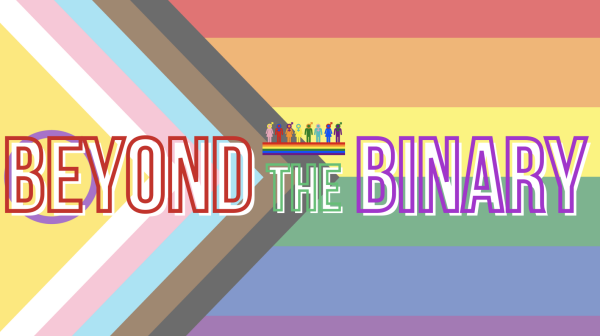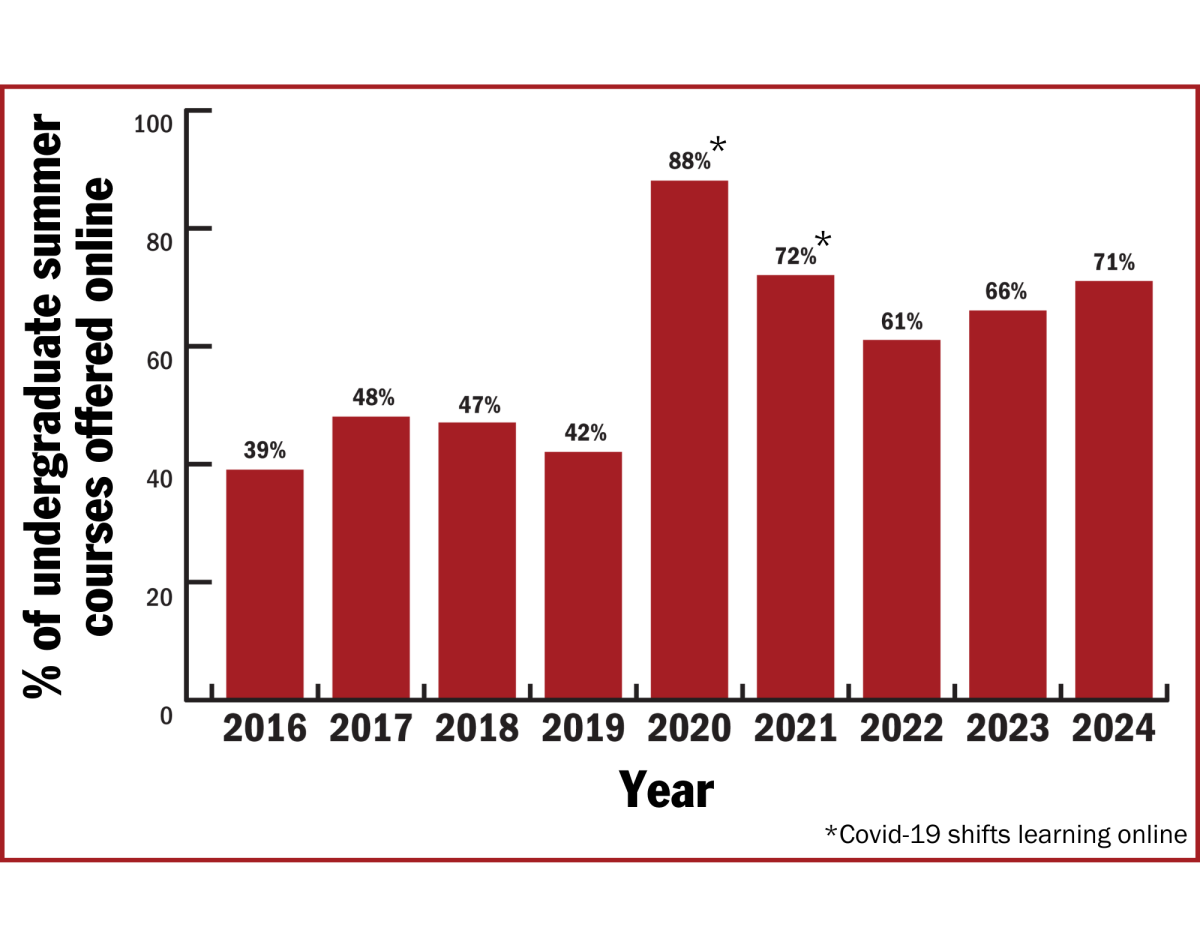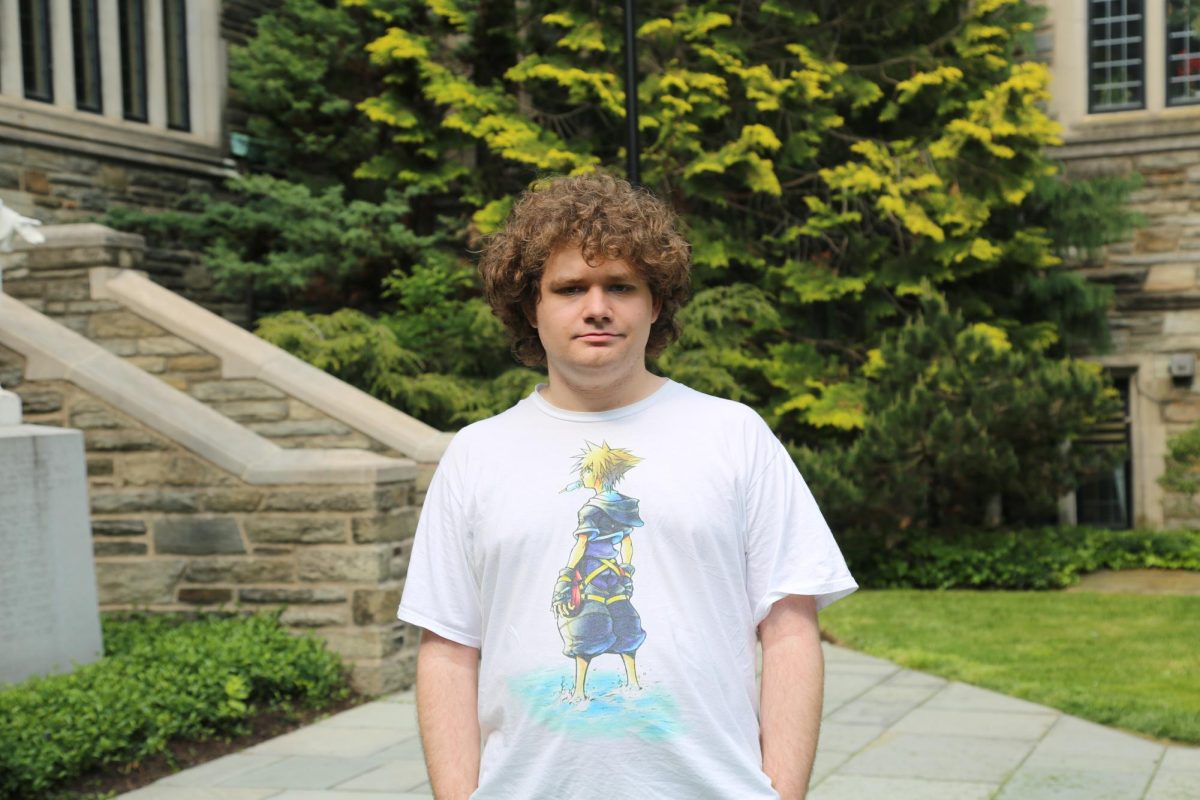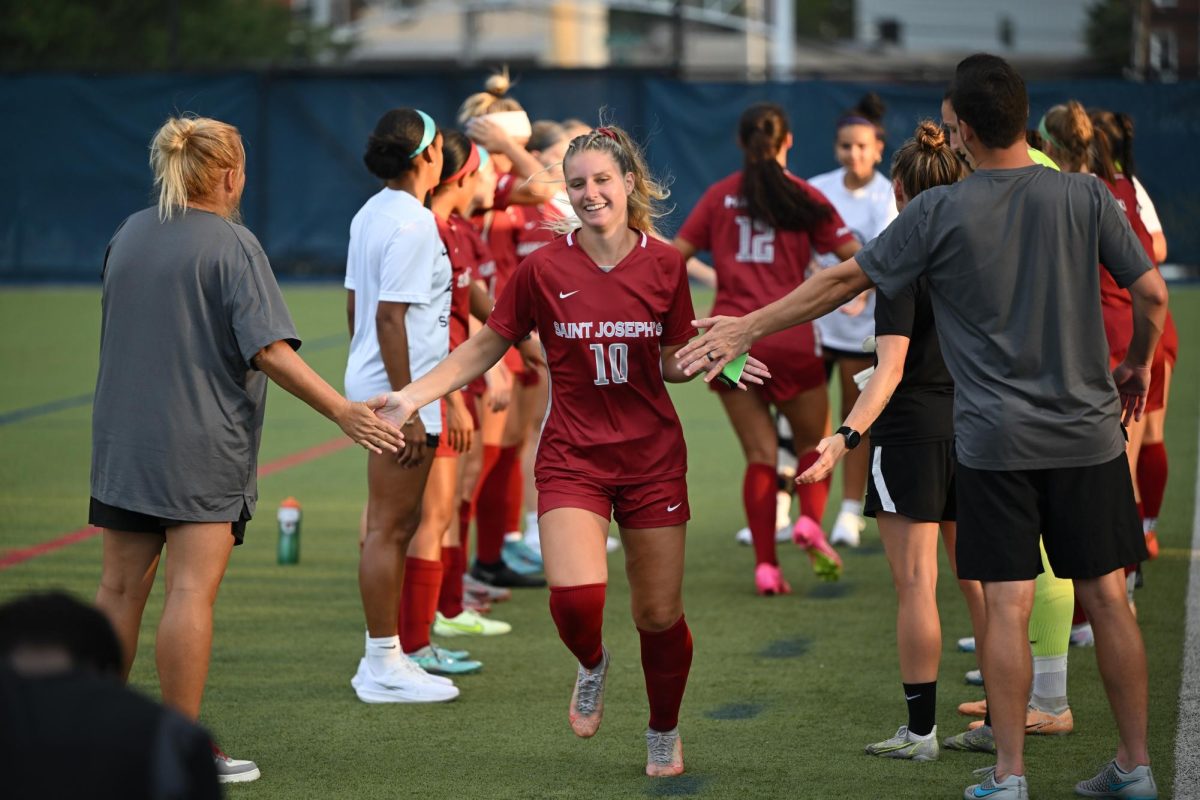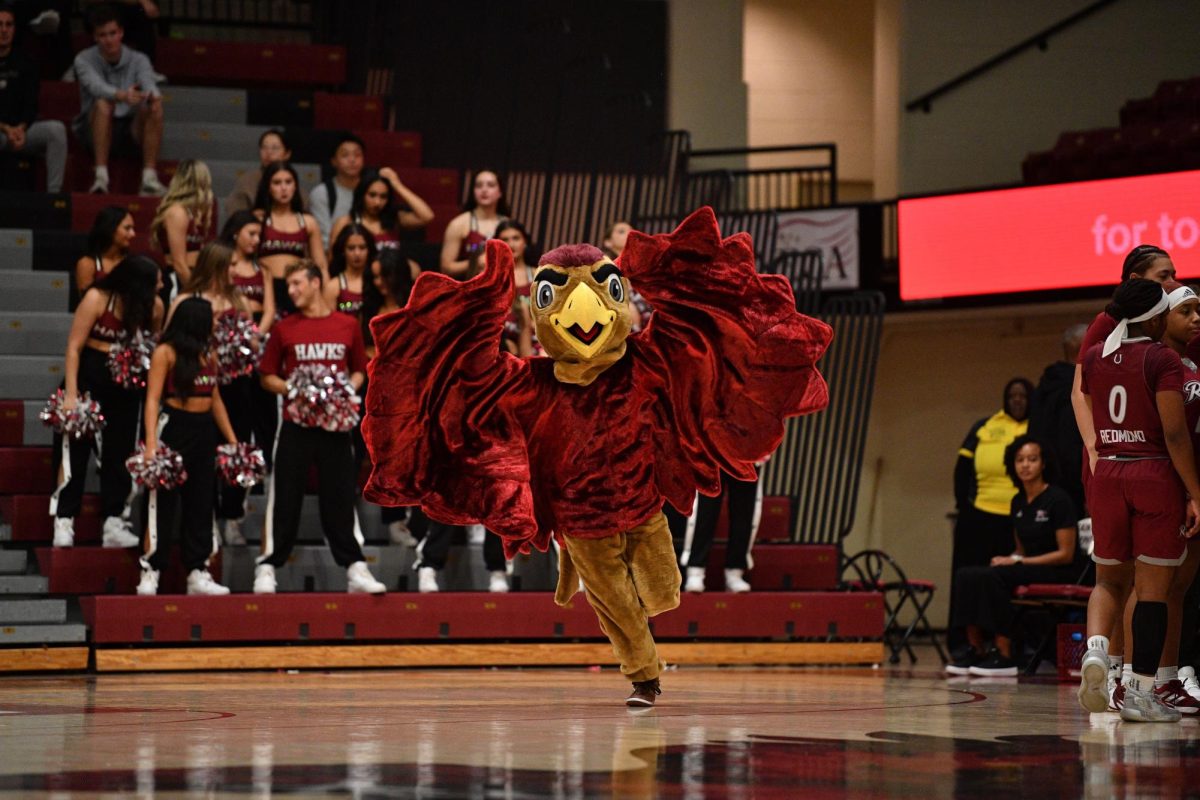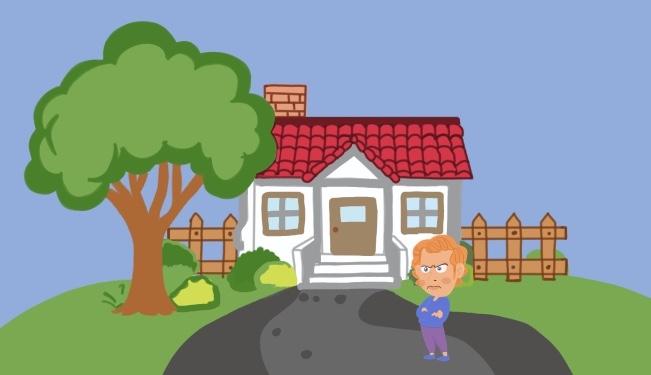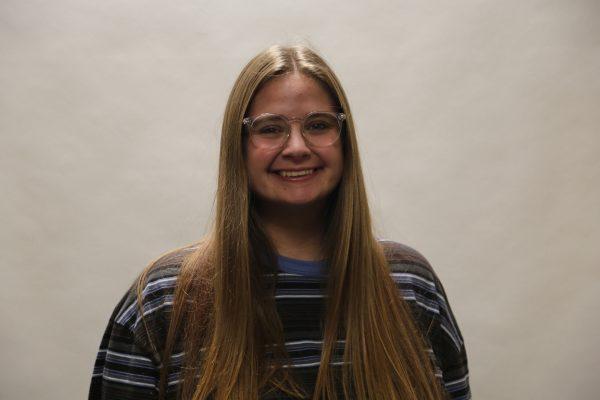In the five years since St. Joe’s began offering gender-inclusive housing, interest has steadily increased. For some students, however, the option has often fallen short of their needs.
Louie Collins ’25, a trans man, opted for gender-inclusive housing before arriving on campus in fall 2021. But the initial selection process left him with so many unanswered questions.
“I didn’t know what building I was going to be put in. I didn’t know who my roommates were going to be,” Collins said. “And it was a whole thing to even tell them that I wanted to be in gender-inclusive housing.”
Gender-inclusive housing allows students of different gender expressions, gender identities or sexes assigned at birth to live together. All students who qualify for campus housing are eligible for gender-inclusive housing at St. Joe’s.
Gender-inclusive housing was first offered in fall 2019 and has been offered every semester since, Jessica Moran-Buckridge, Ed.D., associate dean of Residence Life, wrote in response to written questions from the Hawk. She said the Office of Residence Life worked with RAs, SJUPride and the Trans-Inclusion Working Group — which Moran-Buckridge was a part of at the time — to “complete benchmarking and research, and to make recommendations for the process that we use.”
“We had seen an increase in demand for more flexible options and knew this was an increasing need for students,” Moran-Buckridge said.
While “interest varies year to year,” Moran-Buckridge said Residence Life typically works with between five and 15 students annually who request gender-inclusive housing.
Nationally, interest and need for gender-inclusive housing has grown as well. Campus Pride, a nonprofit organization that works to create safe college environments for LGBTQIA+ students, has compiled a list of all the colleges and universities in the U.S. that offer gender-inclusive housing — there were 430 institutions on the list as of Aug. 14, 2023. Of the 27 Jesuit institutions in the U.S., 15 explicitly state on their residential housing websites that they offer gender-inclusive housing, support or modified accommodations.
But at St. Joe’s, Collins said, “You have to know about it to get it.”
While Residence Life now has a webpage dedicated to gender-inclusive housing options, students like Eli Musselman ’25 and Collins learned about the option elsewhere.
Musselman first found out about gender-inclusive housing from his Hawk Host during a campus tour.
Musselman said finding out that gender-inclusive housing existed at St. Joe’s provided him with a sense of security. But, like Collins, not knowing who his roommates were going to be right up until move-in was nerve-wracking.
“It puts me in a situation where I have to explain a lot of things to people, and also puts me in a situation where people can be uncomfortable or confused,” said Musselman.
Collins learned of the university’s gender-inclusive housing through a March 2019 article in The Hawk. He also came across a Facebook post in the Class of 2025 group from Musselman, introducing himself to other students in the group.
Cal Gallagher ’27, a trans woman, said she first heard about gender-inclusive housing on campus last October, two months into living on the men’s wing in McShain Hall.
“I am the person that should have known of this, and I didn’t,” Gallagher said.
Musselman, who was an RA for gender-inclusive housing in LaFarge Hall during the 2022-23 academic year, told Gallagher about the university’s gender-inclusive housing options. Gallagher immediately contacted Residence Life to make the change.
Gallagher was moved into a single dorm room in McShain, where she got her own private bathroom. One problem: She wasn’t provided with toilet paper by housekeeping like the other students living in the building. When Gallagher asked Residence Life staff about receiving toilet paper, she said they told her no.
Moran-Buckridge responded to The Hawk that she was not aware of this, and all first-year students should receive housekeeping services and toilet paper.
“If we make specialized housing accommodations with a student in a non-typical assignment that is not typically served by housekeeping, this may be the case,” Moran-Buckridge wrote.
Choosing gender-inclusive housing
Although Moran-Buckridge said there are “prompts” about gender-inclusive housing in the housing portal on The Nest, Gallagher, Musselman and Collins all said they did not find one when selecting housing.
“You had to go into the ‘accommodations’ section and write, ‘Please put me in gender-inclusive housing,’” Collins said.
Additionally, when searching in the portal for a compatible roommate, students can only choose roommates based on the sex they listed in their student profile. The only options there are “male” and “female.” So, Gallagher could only search for potential roommates that identified as male.
In follow-up questions from The Hawk, Moran-Buckridge wrote that in the “Browse Rooms” page for first-year students or “Roommate Search” for others, there is language that directs students to contact Residence Life for assistance if they can’t find a roommate that matches their gender identity.
“The housing portal is ‘smart’ in that it uses logic to auto-populate roommate and housing options based on students’ demographic information submitted on SJU application materials,” Moran-Buckridge explained. “It will populate gender-specific roommate matches and housing spaces. We know that this is an imperfect technological system, and asking students to contact our office to adjust this is a way to be individualized with students while still providing mass-efficiency for housing selection for 2,300 residential students.”
Housing options
Gender-inclusive housing options at universities are often dependent upon existing residential living spaces.
Since 2017, Gonzaga University, a Jesuit university in Spokane, Washington, with an on-campus population similar to St. Joe’s, has offered gender-inclusive housing for trans, nonbinary, genderqueer and gender nonconforming students and LGBQ+ housing for students who identify on the LGBQ+ spectrum and want to live in community with other queer-identifying students.
Over 300 students chose these options this academic year, said Jon Wheeler, director of Residence Life at Gonzaga, adding that the number has gone up each year.
Additionally, students who request gender-inclusive and LGBQ+ housing select their housing before the general student population so they can see what their options are without restrictions.
At St. Joe’s, while Hawk Hosts are instructed to tell students that LaFarge is the option for gender-inclusive housing, Moran-Buckridge said it can be accommodated in any residence hall, with some spaces being more ideal than others.
First-year suite-style buildings, like LaFarge and Sourin halls, are utilized since there are fewer students sharing a common bathroom, while traditional style halls with two people in a room and hallway communal bathrooms like Villiger and McShain halls “are not ideal options,” Moran-Buckridge wrote.
Moran-Buckridge added that the university’s newest residence hall, Sister Thea Bowman Hall, slated to open in fall 2025, will offer both gendered and gender-inclusive housing options.
Sophomore options
All residential buildings that house sophomores — including the Living & Learning Commons (LLC) on the University City campus — can be designated as gender-inclusive since they are more private and self-contained by design, Moran-Buckridge said.
After a year in LaFarge, Collins requested gender-inclusive housing again for his sophomore year. He said Residence Life told him he had the option of living in a building other than LaFarge, but he had to find roommates who also agreed to gender-inclusive housing. He struggled to find those roommates, he said, because gender-inclusive housing “wasn’t advertised to other trans students.” So, he was placed in LaFarge again.
Back in LaFarge, Collins was required to purchase an all-access meal plan since there are no available kitchens in the hall.
When The Hawk asked Moran-Buckridge if a minimum number of students interested in gender-inclusive housing are required for it to be offered, she replied that this is “a bit of a challenging question.” She said while Residence Life does not require a certain number, “reality might feel like this is true.”
Additionally, Moran-Buckridge explained sometimes students ask for gender-inclusive housing after the housing selection process has begun, which means there is less availability and flexibility.
“We are very tight on housing availability in general right now,” Moran-Buckridge said. “We need to utilize all available housing spaces. As a result, we do need sophomore students to ‘fill’ an apartment, which typically means that they will need to identify a roommate or group in advance of selection to have a lot of building choices within the housing process.”
Jesuit values
Moran-Buckridge said offering gender-inclusive housing aligns with Jesuit values in many ways, including caring for the whole person.
“Our role is to care for all fundamental needs, including housing, that affirms the wholeness of each person’s identity,” Moran-Buckridge wrote. “We are also committed to faith that does justice for our students and for members of our residential community. Gender-inclusive housing is just one way our office can demonstrate our commitment to these values.”
For some trans students, the university isn’t quite there, yet.
Musselman said he has talked to several first-year students who are trans or gender nonconforming who had no idea gender-inclusive housing existed. If they had, they would have applied for it.
“Why did they not know it was a thing? Where was this lapse?” Musselman asked. “Because I feel like it cannot be solely on the students to just figure that out.”
This is the eighth story in a series by Allie Miller ’24 about issues that impact LGBTQIA+ people at St. Joe’s and in the Philadelphia area.
